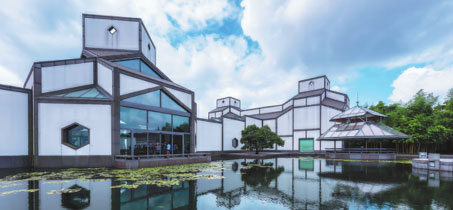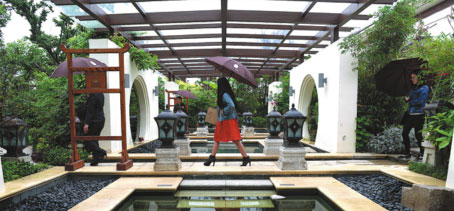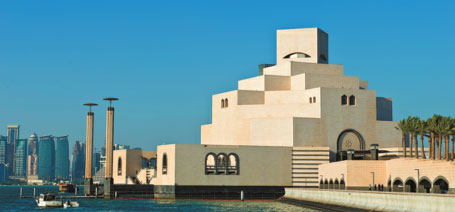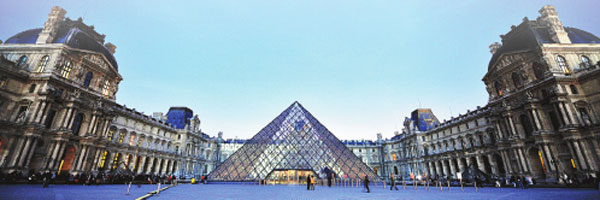HOW I. M. PEI EMBRACED PAST AND PRESENT




Visionary architect celebrated as master of his craft
Chinese-American architect I.M. Pei, 102, who died in a New York hospital on Thursday, once described his designs as "one's dozen daughters who are distinctive from one another".

Among the designs, the Louvre Pyramid in Paris and the Suzhou Museum in his ancestral province of Jiangsu are especially linked to the 1983 Pritzker Architecture Prize laureate.
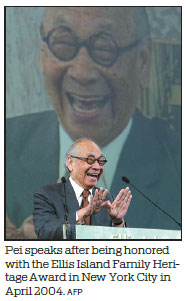
Pei spoke of the Pyramid project as "the greatest challenge and greatest accomplishment" of his lifetime. His design for the Louvre's main entrance in the shape of a pyr-amid sparked strong opposition and criticism in France. The structure, once considered a folly, but now widely recognized as an iconic landmark, celebrates its 30th anniversary this year.
Pei worked with his two architect sons to complete the Suzhou Museum, his final work in his native China. He referred to the museum, built in a classic Chinese garden style that blends well with Suzhou's landscape, as his "dearest little daughter". He said, "I do care about this museum, because I gave it a lot of my love and my energy."
The two institutions have joined the worldwide mourning for Pei, in tribute to his prolific career.
The Louvre has opened a page on its website on which a black and white photo shows Pei smiling in front of the glass pyramid.
Its tribute to Pei says, "A visionary architect who enjoyed an exceptionally rich and long career, Pei followed in the footsteps of acclaimed architects who have shaped the (Louvre) palace since the 12th century, leaving an indelible mark on the museum with his work that boldly took the Louvre into the modern era."
"I. M. Pei was a diligent, dependable architect and a true master of his craft. He instilled great enthusiasm in all those who had the pleasure of working alongside him at the Louvre over the course of this vast project. His infectious smile will remain cherished in our memories," the tribute said.
The front page of the Suzhou Museum's website turned a mournful black and white on Friday on news of Pei's death.
The museum has turned one of its rooms into a memorial for visitors to present flowers in honor of Pei and to appreciate his work. Since Friday morning, hundreds of people in Suzhou have visited the museum to pay tribute to him, and the room will remain open for at least a week.
Pei's designs for the Louvre Pyramid and Suzhou Museum reveal his two worlds, one in which he was steeped in history and cultural traditions and the other in which he was exposed to the freedom of modernist architectural design.
Standing at the crossroads of past and present - the East and West - Pei provided those using his designs across the world with fresh, inviting experiences by smartly balancing culture, nature, light and social needs.
Daniel M. Abramson, professor of the history of art and architecture at Boston University, said, "In design, Pei's signature was the use of a few large-scale geometric shapes for building masses, both in combination (for example, the National Gallery of Art East Wing in Washington) and standing alone (for example the Louvre Pyramid).
"Another signature was Pei's highly refined use of poured concrete. Both of these signatures - abstract shapes and attention to material - made Pei a modernist architect, one interested in artistry, not standardization."
Abramson added, "Pei's refined restraint with the abstract vocabulary and materials of modern architecture - not to mention his acumen with clients and the public - made modern architecture not just acceptable but truly popular in the 1970s and '80s for monumental cultural and civic buildings."
Born in Guangzhou, Guangdong province, to a large, wealthy family, Pei was expected to become a banker, like his father who cofounded Bank of China, or a doctor, as his father had wished. But Pei's artist mother instilled in him an early interest in art and culture.
Pei moved to Shanghai with his parents when he was 10. The prosperous, Western-style buildings along the Bund triggered his first thoughts of studying architecture. He once recollected that almost every day after school, he was drawn to construction of the Peace Hotel in 1929, which became the most luxurious building in Shanghai at the time.
The city was not far from Suzhou where the Pei family's ancestral home was located. Considered one of the four richest families in Suzhou during the Qing Dynasty (1644-1911), the Peis had been in the city for 600 years.
The family owned Shizilin, or Lion Grove Garden, one of the most renowned tourist attractions in a city known for its beautiful gardens. Pei's grandfather, a well-known financier, asked him to spend some time at the house during summer holidays.
Pei and his cousins used to play in the garden, hide in the strangely shaped hollow rocks and enjoy views of the stone bridge, ponds and waterfalls. He used to say that he realized later how the years spent in Suzhou influenced his designs and made him aware of the relationship between people and nature.
In 1935, Pei arrived in the United States to pursue his dream of becoming an architect. Although the then teenager had seen many Western-style buildings in Shanghai, it was during his studies at the Massachusetts Institute of Technology and the Harvard Graduate School of Design that his mind truly opened and he learned about the future direction of modernist architecture. He was inspired by the work of pioneering modernists Charles-Edouard Jeanneret, known as Le Corbusier, and Frank Lloyd Wright.
After teaching briefly at Harvard University, Pei worked for New York developer William Zeckendorf for 12 years, gaining experience by participating in urban renewal and low-income housing projects across the US.
In 1955, Pei started his own practice, winning commissions for his stark designing style that featured less ornamentation but created bright, inviting spaces for the public.
"The simpler the solution, the more powerful it is," he said.
"Architecture is stones and brick, concrete and steel," he told The Washington Post. "Architecture has to endure."
Pei was highly persistent with his style, which was grounded in thoughtful, comprehensive analysis before he began the design work. His confidence and perseverance led him through the storm of outrage he encountered with his work on the Louvre project.
Hu Shaoxue, a senior architect and professor at the Architectural Design and Research Institute of Tsinghua University, was among faculty members who received and had discussions with Pei when he visited the university in 1994 to be named an emeritus professor.
Hu said Pei gave a lecture at the university during his three-day stay in Beijing, and mainly talked about his design for the Louvre Pyramid.
"He said people misunderstood him by relating the design to an Egyptian pyramid. He said he chose a pyramid shape because it was the smallest structure he could think of that would not disrupt the historic landscape of the Louvre whilst capturing as much light as possible.
"He said an architect needed to think carefully, and that was why it took him some six months to study and to analyze before accepting the Louvre commission offered by then French President Francois Mitterrand."
Annette Fierro, associate professor of architecture at the Weitzman School of Design, University of Pennsylvania, said Pei's work at the Louvre revolutionized the way construction was done in France.
"Before that, there would be a system of detail in construction, and he insisted he would not do that. When he built the Louvre Pyramid, there were many, many protests. There were a series of challenges while it was built. There were articles in the newspapers every single day. People were against the project and were outraged.
"And then when it opened, they realized it was not going to be a standard glass building. It had a kind of specialness to it, in the way that the structure worked, in the details - all of the finesse of the building worked against the existing context of the Louvre."
Fierro said Pei "completely revolutionized the way you build in a historic context, because the Louvre Pyramid was a total departure - it was glass and steel, and it was very advanced technologically".
Hu, from Tsinghua University, recalled that Pei said that generally there are two types of people in architecture, "one making actual designs and the other carrying out theoretical studies - and he was the former".
"He was quite pragmatic. He was not an architect who liked to produce meaningless rhetoric, write many books or publish theories," Hu said.
Pei's work in China includes the Xiangshan Hotel in Beijing, the Bank of China tower in Hong Kong and its head office in Beijing, which he viewed as a memorial for his father.
His design for the Suzhou Museum demonstrates a strong personal attachment to his family's ancestral home, cherished childhood memories and his understanding of the need to usher Chinese cultural traditions and philosophies into a modern context.
Pei was 87 when he started to design the Suzhou Museum. Qian Zhaoyue, deputy director of the museum, said its workers were impressed by Pei's persistence when he was designing the building.
"Mr. Pei didn't start the design until he had researched all the cultural relics we kept," Qian said. "He also suggested where some of the relics should be placed, and designed some of the display cabinets.
"The museum combines traditional Chinese and modern architectural features. The building coexists harmoniously with the environment."
Lu Andong, an architecture professor at Nanjing University in Jiangsu province, said the Suzhou Museum is his favorite Pei design, because the architect shunned all cliched cultural elements and used "modernist architectural language" to reinterpret and hail the spirit of Chinese tradition, through which he gave the museum decency, calm, creativity and a "modest touch".
Cao Jun, director of the Suzhou Art Museum, was a member of a government delegation from the city that visited Pei in 2001 to invite him to design the building. He said he was impressed by the architect's "distinguished charisma" when he first met with him.
"He liked to listen to us speaking in the Suzhou dialect and he replied in a Shanghai accent," Cao said.
He said the delegation brought Pei a bottle of fresh jitoumi - which translates as "chicken head rice" or "gorgon fruit seed". It is usually cooked with sugar and dried osmanthus as a traditional festive treat in Suzhou, which Pei missed the most.
Cao also recalled that Pei treated the delegation to dinner at a French restaurant and when they had finished, a woman from a neighboring table approached, holding a bottle of French wine. She wanted to give the wine to Pei in thanks for his design of the Louvre Pyramid.
In his acceptance speech at the 1983 Pritzker Architecture Prize ceremony, Pei said, "Let us all be attentive to new ideas, to advancing means, to dawning needs, to impetuses of change, so that we may achieve, beyond architectural originality, a harmony of spirit in the service of man."
Wang Kaihao contributed to this story.
Contact the writers at linqi@chinadaily.com.cn
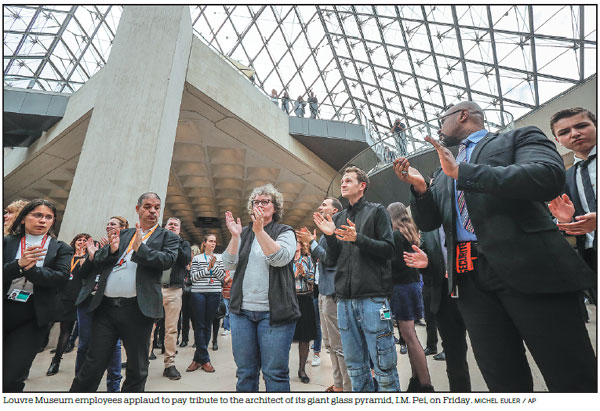
|
The Suzhou Museum provides an escape from the heat of summer.Chen Lanfeng/for China Daily |
|
|
|
Pei's Museum of Islamic Art in Doha, capital of Qatar, was completed in 2008.Provided To China Daily |
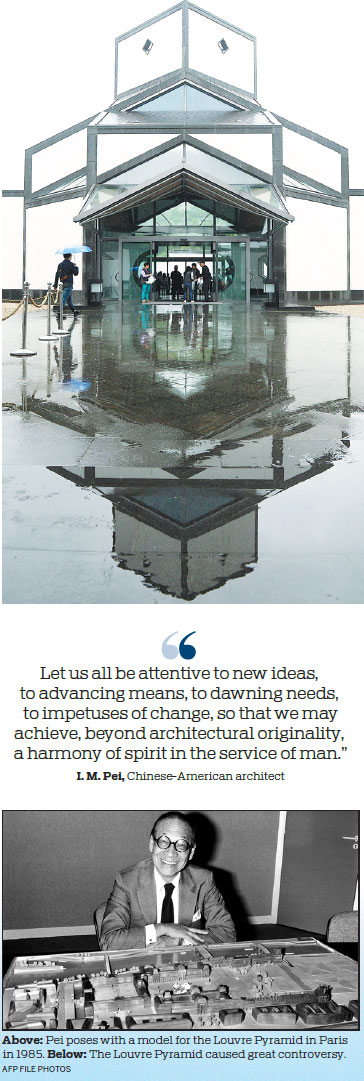
|
The Louvre Pyramid caused great controversy.Afp |
(China Daily Global 05/20/2019 page1)


